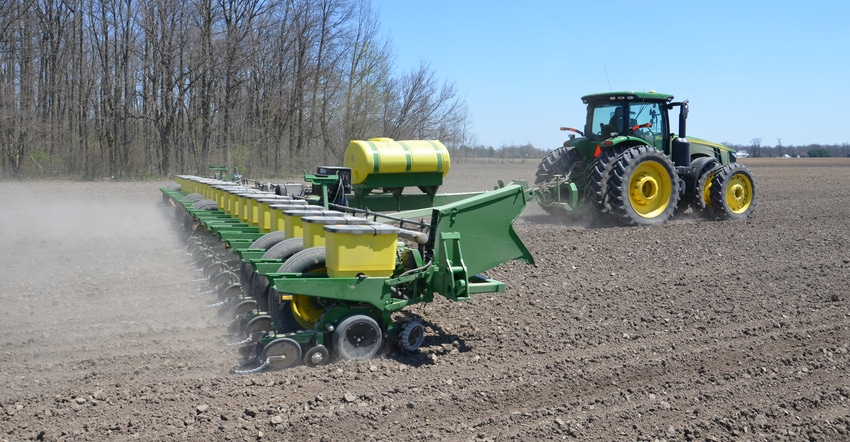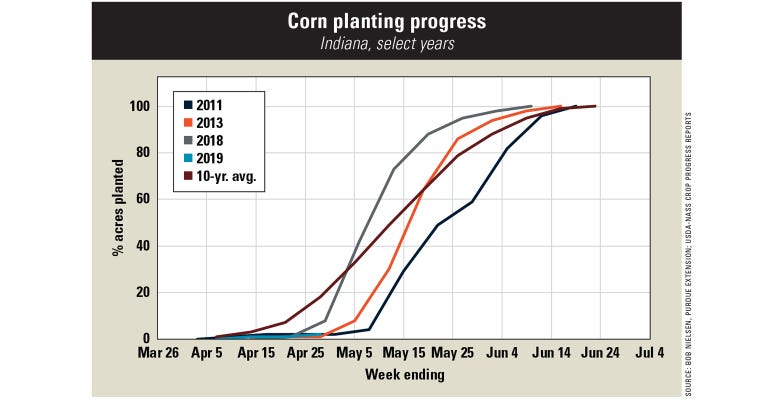
Just because the 2019 season didn’t get off to the start you hoped for doesn’t mean the potential for high corn yields is out the window. Bob Nielsen, Purdue University Extension agronomist and corn specialist, emphasizes that many other factors besides planting date impact final yield in any one season. What happens the rest of the year can have a huge impact on yield, no matter when corn is planted, he observes.
To illustrate his point, Nielsen pulled data from years within the past decade that featured a slow start to corn planting. He based how fast or slow the start was on data collected by USDA’s National Agricultural Statistics Service.
Nielsen selected these years: 2011, 2013, 2018 and 2019. He plotted them on a graph and included the 10-year Indiana average. Find this and other charts at Nielsen’s Chat ‘N Chew Cafe website; look under Indiana Crop Progress Charts on the right-hand side.

Slow starts
In 2011, about 5% of the corn acres in Indiana were planted by May 11. In 2013, the figure was pushing 20%. The 2018 season mimicked those years through April, and then weather improved in very early May. By May 11, corn planting was over 60% complete. Based on the 10-year average, nearly 15% was planted by April 27, and about 50% by May 11.
What is in the books for 2019 is that by May 1, about 3% of Indiana’s corn was planted, and it was tracking closest to 2011 and 2013.
What happens next makes all the difference in outcome, Nielsen says. Looking at just 2011 and 2013 proves the point. In 2011, late planting was followed by a hot, dry summer, and Indiana’s corn yield was 8.5% below trend yield. That’s still far above the 2012 debacle, even though corn was planted early in 2012.
Conversely, in 2013, moderate weather patterns developed over the rest of the season. Despite the late start to planting, Indiana’s corn yield wound up 8.5% above trend yield. In 2018, the wet spring was followed by a warm May and June and moderate weather patterns in July and August. Corn yield wound up 10% above trend yield.
Planter power
Fortunately, delayed planting doesn’t tell the whole story for a season, and another reason why boils down to how fast Indiana farmers can put corn in the ground when the weather breaks, Nielsen says. Credit part of that to an abundance of 16- and 24-row planters, and part of it to GPS and autosteering, which allows planting well into the night if you have manpower to keep crews fresh.
Nielsen also plotted the amount of corn and soybeans that were planted in Indiana during the week of maximum progress, determined by looking back at crop progress reports after the fact, from 1999 through 2018.
He found that in 2001, well before the latest technological advancements, 46% of the crop was planted in one week. That amounted to 5.25 million acres. While that was the highest, between 20% and 30% of the crop was planted during one week in several years. About 30% of the total acreage was planted in one week in 2018.
About the Author(s)
You May Also Like




